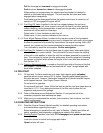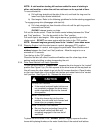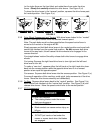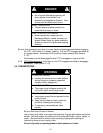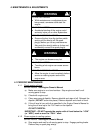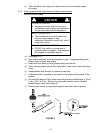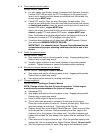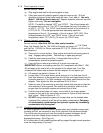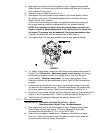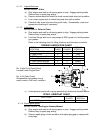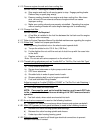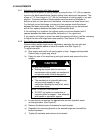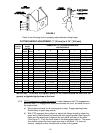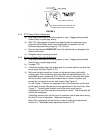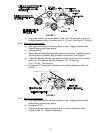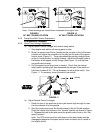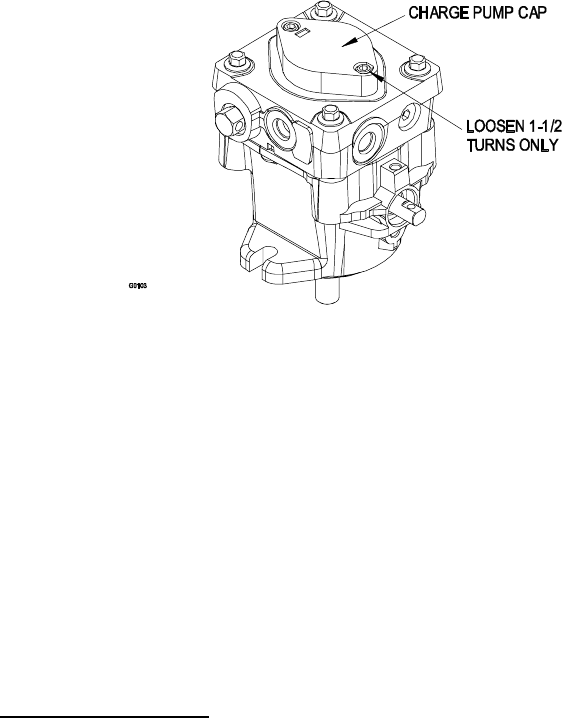
21
a) Stop engine and wait for all moving parts to stop. Engage parking brake.
Raise the rear of the machine up onto jack stands high enough to raise the
drive wheels off the ground.
b) Check oil level as stated in Section 4.1.8.
c) Start engine an move throttle control ahead to full throttle position. Move
the speed control lever to the middle speed position and place the drive
levers into the “drive” position.
If either drive wheel does not rotate, it is possible to assist the purging of
the charge pump by carefully rotating the tire in the forward direction.
NOTE: It is necessary to lightly touch the charge pump cap with your
hand to check the pump temperature. If the cap is too hot to touch, turn
off engine. The pumps may be damaged if the pump becomes too hot.
If either drive wheel still does not rotate continue with step (d).
d) Thoroughly clean the area around each of the charge pump housings.
FIGURE 4
e) To “prime” charge pump, loosen two hex socket head capscrews (shown in
Figure 4) 1-1/2 turns only. Make sure engine is not running. Lift charge
pump housing upward and wait for a steady flow of oil to flow out from
under housing. Retighten capscrews. Do this for both pumps. Note:
Hydraulic reservoir can be pressurized to up to 5 psi (34 kPa) to speed this
process.
f) If either drive wheel still does not rotate, stop and repeat steps (d) through
(e) above for the respective pump. If wheels rotate slowly, the system may
prime after additional running. Check oil level as stated in Section 4.1.8.
g) Allow unit to run several minutes after the charge pumps are “primed” with drive
system in the full speed position. Check oil level as stated in Section 4.1.8.
h) Check hydro drive linkage adjustment as stated in Section 4.2.9.
4.1.11 Check tire pressures:
Service Interval: Pneumatic (air-filled) Drive Tires – 40 hrs.
Semi-pneumatic Caster Tires – No Maintenance
a) Stop engine and wait for all moving parts to stop. Engage parking brake.
Remove key or spark plug wire(s). Check air pressure in drive tires;
recommended tire pressure is: 12 to 14 psi (83-97 kPa).
b) Inflate tires to pressures stated above. Measure circumference of each
drive tire. Adjust tire pressures within the above range to try to make tire
circumferences match as closely as possible.



